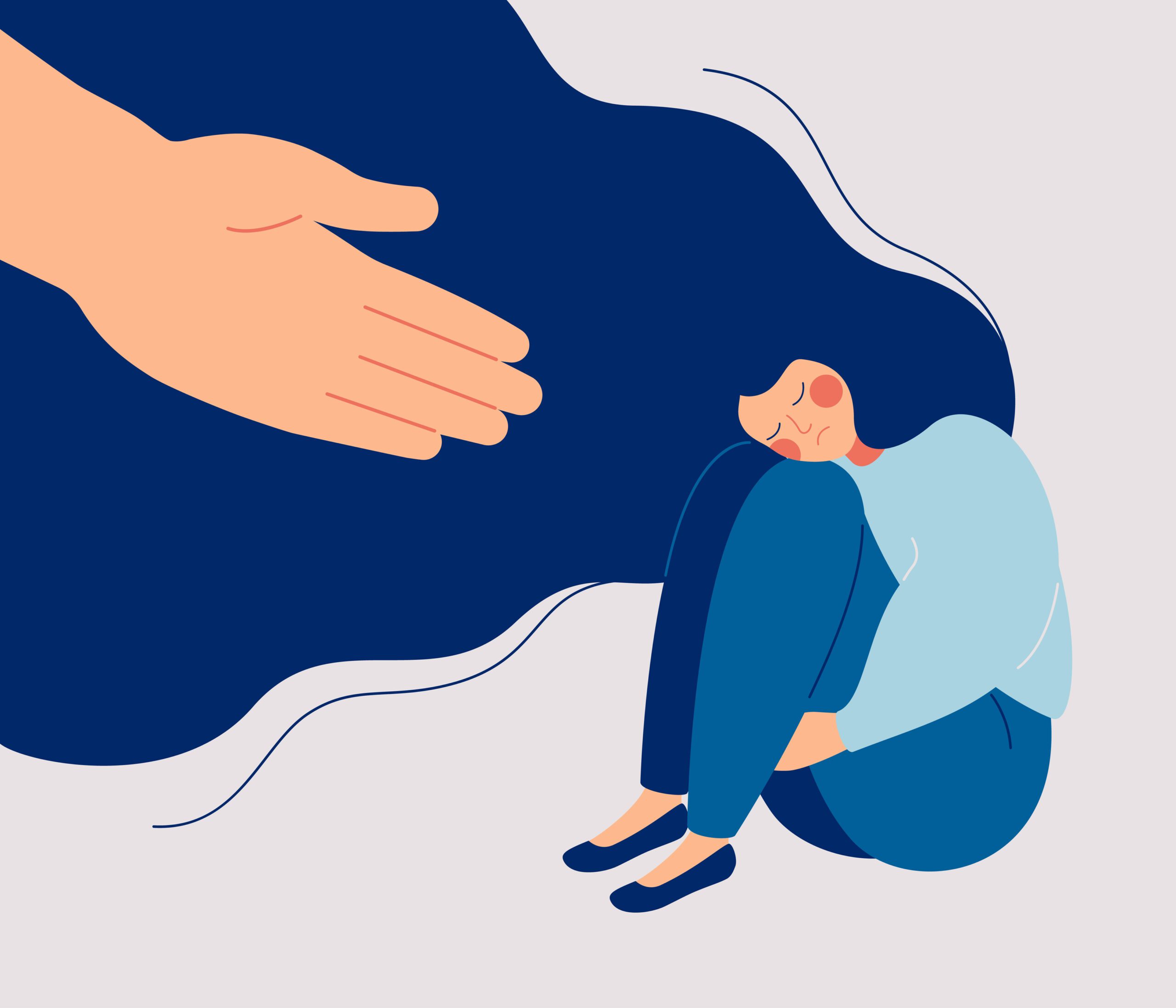The day Kyle Busquine risked his life for a stranger still seems surreal. In June 2018, after stepping off the subway train at Toronto’s Broadview station, the 24-year-old heard a man pleading faintly, “Help, help, please help!”
“It was primal — like something out of a horror movie,” Busquine, who is an IT graduate, says. Tracing the source of the cry, Busquine saw a man with a white and red cane lying on the tracks, his right leg contorted unnaturally. The man’s distress resonated with Busquine, and he felt an overpowering compulsion to act.
You may unsubscribe from any of our newsletters at any time.
“I can only imagine being blind and feeling so helpless,” he says. “I was on so much adrenaline, I wasn’t really thinking — I just knew I had to help.” He leapt down to the tracks, closely followed by two other youth, and together they hoisted the man to safety.
Busquine has been hailed as a hero for his compassion, but he deflects the accolades. “If it’s in your reach to help someone, you should just help them. That’s a very human thing to do,” he says.
https://twitter.com/CBCNews/status/1012871001141477377
The impulse to help others isn’t simply the result of a good upbringing, a strong moral compass or adherence to a faith-based code of conduct. The drive to assist is born in empathy — that ability to feel and understand what others are feeling — and according to recent neuroscience, empathy is hardwired into all mammals. “At a fundamental level, the default is to help — in order not to help you have to actively suppress that urge,” says Peggy Mason, a neuroscientist and professor at the University of Chicago.
For both humans and other mammals, empathy is an evolutionarily advantageous trait that helps us survive as groups. Empathy allows us to recognize others’ distress and motivates us to alleviate its cause. If a herd doesn’t care when a baby cries, or ignores an older man who is injured, the group won’t last long, Jennifer Ripley, a professor of psychology at Regent University in Virginia Beach, Va, says. “Without that gift of empathy, it would be … rough,” she says.
But unlike animals who act on instinct, humans can regulate their empathy, choosing to either boost it up or tamp it down, to either take action to help or decide to walk away. And the decision to act is nurtured throughout life — by our upbringing, religious belief, life experience, worldview or a multitude of other factors.
‘Knee-jerk reaction’ to others’ distress
Researchers have identified two types of empathy in humans: affective and cognitive. Affective empathy, which we share with some animals, is like a knee-jerk reaction, an unconscious and automatic response to the feelings of others. Cognitive empathy, unique to our species, is more carefully considered and deliberate, and leads to understanding the other person’s thoughts and feelings.
Mason has shown that even mammals like rats have the capacity for affective empathy. In one study, she placed the animals in a locked cage, while their former litter mates roamed free outside. Most of the rats put their snouts to the millstone, tinkering with locks for hours to free the others. Later, Mason tested the free rats’ dedication by placing a container of chocolate chips beside the trapped rats. Half of her subjects bypassed the temptation, freeing their counterparts before releasing the tasty treats, and sharing the snacks with the former captives.
Mason attributes this selfless behaviour to the spread of anxiety from the caged animals to the free ones, whose agitation and stress hormones rose alongside with that of their imprisoned friends.
But some rats froze as they panicked. The rodents who cared too much about those in the cage actually became paralyzed by emotion. The rats with the highest measured stress chemicals, (25 percent of the total), were so overwhelmed by their vicarious distress that they were unable to help.
More on Broadview: One dad’s struggle to get in touch with his emotions
The same emotional contagion is present in humans. At the University of Amsterdam, neuroscientist and professor Christian Keysers studies nerve cells called “mirror neurons,” which simulate other people’s actions, sensations and emotions within our own brains.
In one experiment involving mirror neurons, subjects’ ability to empathize was first determined through psychological testing. Then their brains were scanned as they smelled a rancid odor. The subjects became nauseous, and the region coding for such bodily sensations, (called the insula) was activated. In the second stage of the study, the subjects were not exposed to actual smells, but simply watched actors pretending to be disgusted. Amazingly, they internalized the physical reactions mimed by the actors, becoming sick to their stomachs, and activating the identical brain regions which lit up on the first round. The degree to which the subjects mirrored the actors’ reactions paralleled their capacity for empathy.
“If we see another person suffering, we really feel his pain,” Keysers says. These shared experiences not only connect us viscerally, they also motivate us to act. “If your help makes the other person rejoice, you can share in his joy.”
Why humans have an advantage
Humans, who use thought as well as feeling to determine the mindset of others, take empathy one step further. Philip Jackson, professor at Université Laval in Quebec City, explains cognitive empathy as a two-step process. First, we switch our attention from ourselves to the other person — a process mediated by the brain’s temporoparietal junction (TPJ). The TPJ helps us detach from our own pressing concerns, including our vicarious distress, which might hijack our ability to focus outwards. This detachment from our own inner worlds helps put the brakes on our secondary suffering, empowering us to act rather than drown in the other person’s sorrow. Then, a different region of the brain — the medial prefrontal cortex — lets us imagine the world from the other person’s point of view. This process helps us put their crisis into context and helps us come up with a plan. For example, if you see your friend crying, you might attribute the tears to loneliness if he just lost a spouse, and you might offer to spend more time with him.
Both types of empathy — affective and cognitive — are necessary, Jackson says. Your vicarious distress isn’t useful if you can’t identify the source of said distress. But just knowing someone is hurt won’t spur you to service unless you’re moved by their plight.
The two types of empathy are influenced by genetics and experience, psychology professor Ripley says. Twin studies have documented the powerful effect of heredity on the empathic behavior of children as young as two years of age. In an Israeli study, the responses of identical twins (with the same DNA) to an examiner’s simulated pain, were much more closely aligned than that of fraternal twins (who share only half their DNA) to the same situation.
“I understand what it feels like when you’re begging for help and not verbalizing it — that’s where my empathy comes from.”
Kyle Busquine
Although we’re born with different levels of the trait, empathy is evident in most children even before they can talk. Parental attunement — noticing that your child is hurting and trying to soothe him or her — is critical to build on this foundation. A child who can count on comfort adopts a nurturing attitude toward others.
Busquine learned the lessons of empathy early in life. His sister, who mostly raised him, always had his back, he says. His grandmother also shaped his principles. She collected used clothing for the poor and took her grandson along to help distribute it. “Her kindness rubbed off on me,” he says.
Adversity can also foster compassion, says psychiatrist Helen Riess, a professor at Harvard Medical School. While some traumatized people block off their emotions, those who have healed are often especially responsive to others in similar situations.
Busquine can relate. In elementary school, he became the target of bullies who called him “ugly” and “fat” until he crumpled into tears. He never forgot those moments. “I understand what it feels like when you’re begging for help and not verbalizing it — that’s where my empathy comes from,” he says.
Doctor had to ‘work for his warmth’
It’s never too late to master the art of selflessness. On a cold winter night in the emergency room at Toronto’s Mount Sinai Hospital, Dr. Brian Goldman’s patient complains of nausea that dates back to her cancer surgery. He takes in her careworn face and hunched posture, and sits beside her. She begins to weep as she talks of loneliness — her daughter lives far away and no one else cares about her condition. Goldman reaches for her hand. He’s not a psychiatrist and but he has one gift to offer. He listens.
Though Goldman makes it look easy, he’s had to work for his warmth. The knowledgeable host of CBC’s White Coat, Black Art was driven to perfectionism early in life but behind his drive was a fear of shame, first from his own mother who humiliated him, and later by colleagues who censored each other publicly for mistakes. The forces of shame and perfectionism left little room for humanity. “You can’t empathize when there’s a black hole sucking in light rays,” he says.
His coldness precipitated a crisis. A few years ago, Goldman assessed a dying woman whose family pestered him all night to admit her. When the patient’s daughter asked whether he’d referred her mother to an internist, he became defensive. “I did what you asked,” he snapped.
The patient died, and a few months later, her husband requested a meeting. “He wanted to see if there was a kind person lurking under all that brusqueness,” says Goldman. As they talked, Goldman set his pride and recognized the despair that had fuelled the family’s demands. He cried along with them.
That epiphany propelled him on a personal odyssey to learn empathy from the world’s kindest inhabitants. All his mentors had one thing in common: they had all faced some form of adversity, but had used their heartaches to help others.
“If your help makes the other person rejoice, you can share in his joy.”
Christian Keysers, University of Amsterdam,
neuroscientist and professor
Goldman emulated their self-compassion, exposing his turmoil publicly in his book, The Power of Kindness. Embracing his flaws freed him to direct his gaze outward. “I used to be jazzed by making diagnoses. Now I delight in connecting,” he says.
We can all boost our empathy, says Harvard’s Riess, who developed a successful program to help overwhelmed physicians recover their kindness. First, we need to leverage our affective empathy to access someone else’s psychological state, she says. Noticing the echoes of another’s feelings and physiology in our own bodies provides valuable information. If someone’s angry, for instance, we might take on their tension and laboured breathing. We can employ our cognitive empathy to pick up non-verbal clues to someone’s mindset, such as their facial expressions, posture and tone of voice. Once we’ve put ourselves in another person’s shoes, we can contextualize their distress, teasing out its cause and some potential solutions. These lessons, detailed in Riess’s recently released book, The Empathy Effect, are readily learned.
For most people, empathy triggers an intention to comfort, says Philip Jackson, even though it almost always comes with a cost that is weighed against the satisfaction of helping. This price tag varies daily — if we have money, we might donate our spare change to a homeless person, but if we’re broke, we’ll probably turn away, says neuroscientist Keysers.
Rescuer: ‘you can’t just say you have morals’
Busquine, for example, didn’t always choose to act in accordance with his conscience. For a few years during his childhood, he’d gained enough social status to turn the tables on his former tormentors, using his intuition to punish them. “I figured out each one’s biggest insecurity, and rammed it into them,” he says. “I was on top of the world but I felt like s—,” he says.
After beginning high school, he decided to become the best version of himself, using his natural empathy as his moral compass. “I’m really good at identifying people’s feelings and analyzing what they’re thinking,” he says. This makes him the go-to person when his friends are in trouble. “You can’t just say you have morals — you have to help people in need,” he says. “I’m proud of the decisions I’m making now,” he says.
Back in June 2018, as he walked home from the subway station after rescuing the blind man, Busquine found himself trembling. When he got home and told his sister what had happened, she was more petrified than proud. “You’re so dumb — you could have hurt yourself,” Busquine recalls her saying . It’s only then that Busquine acknowledged that he’d risked his life to save another.
Still, he says, he wouldn’t change a thing. “Even if I knew all of the ramifications that might happen afterwards, I’d definitely do everything the same way,” says Busquine. “It’s best to live a life where you have no regrets.”
For more of Broadview’s award-winning content, subscribe to the magazine today.















Such hope in this article.